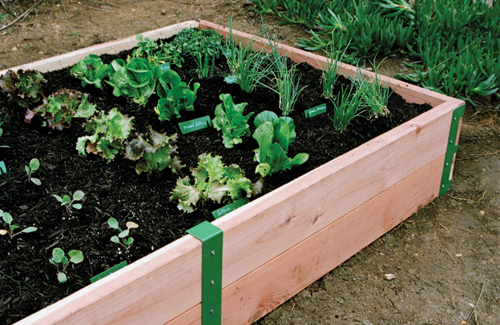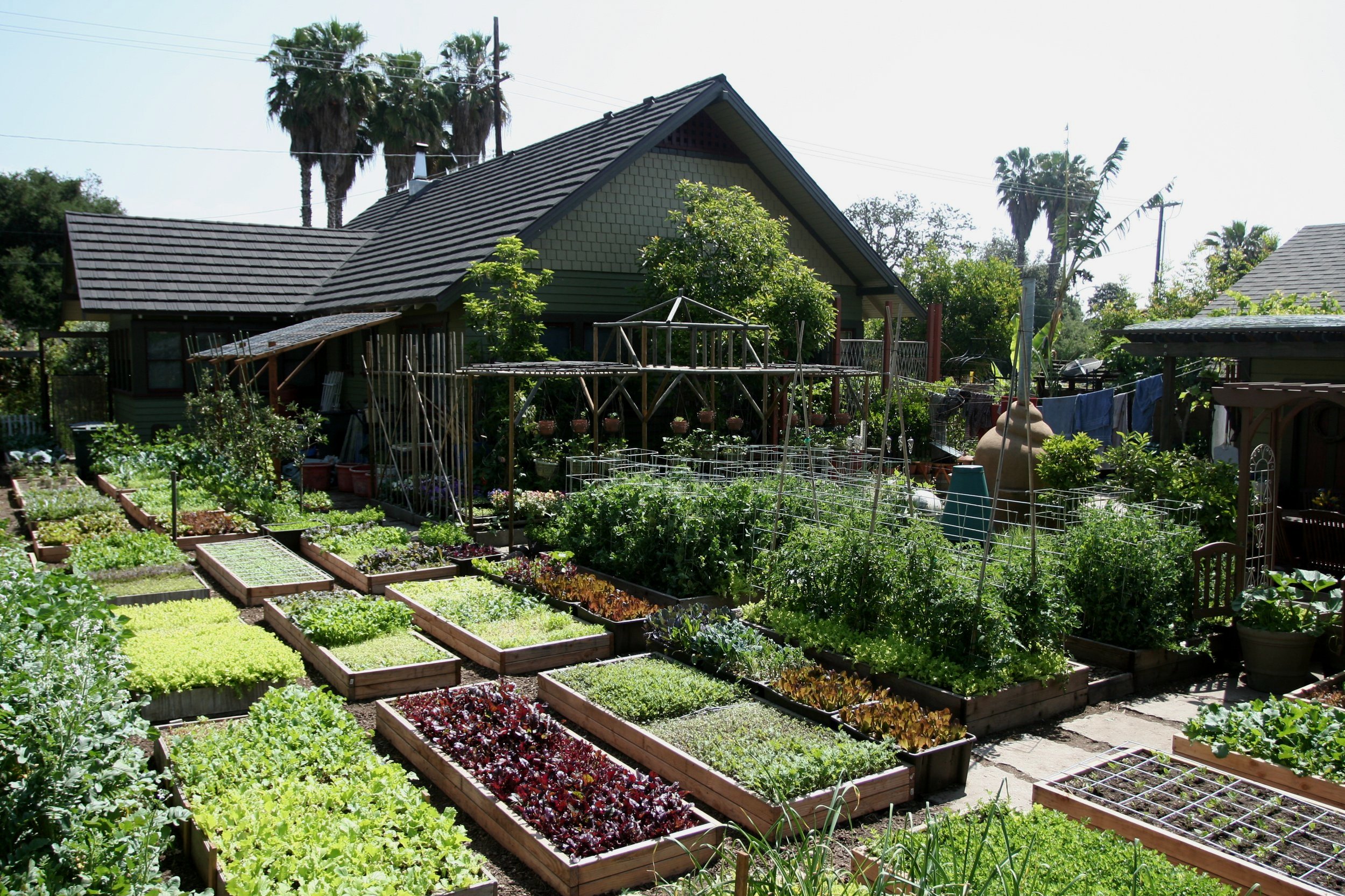Eco-Friendly Methods in Homestead Gardening
Eco-Friendly Methods in Homestead Gardening
Blog Article
Learn Exactly How to Cultivate a Flourishing Gardening Setting for All Ability Levels
Creating a flourishing yard is a diverse venture that can be embraced by individuals at any kind of ability level. By examining key parts such as dirt health and wellness, suitable plant selection, and seasonal treatment regimens, one can establish a sustainable horticulture method that generates enjoyable results. Understanding just how to examine and enhance your yard area lays the foundation for success. Yet, the intricacies of implementing these concepts frequently existing difficulties that can discourage also one of the most enthusiastic amateur. What techniques can be used to conquer these barriers and promote an absolutely successful environment?
Comprehending Your Garden Area
In the world of horticulture, recognizing your yard room is critical to cultivating a growing landscape (Homestead Gardening). The initial step in this undertaking entails evaluating the certain features of your story. Factors such as soil structure, sunshine direct exposure, and water drainage play critical roles in identifying the viability of your yard for different kinds of plants
Begin by performing a soil test to analyze pH levels and nutrient content, which will notify any type of required changes. Furthermore, observe exactly how much sunshine your room obtains throughout the day. Various plants have differing light demands; some grow completely sunlight, while others favor complete or partial shade.

Finally, evaluate the offered area and plan accordingly. This includes considering plant elevations and spread to guarantee sufficient room for growth without congestion. By getting a detailed understanding of your garden space, you established the structure for a successful gardening experience.
Picking the Right Plants
Picking the right plants for your yard requires cautious consideration of various elements, consisting of climate, dirt conditions, and individual preferences. Start by analyzing your neighborhood environment, as certain plants flourish in particular temperature level varieties and weather patterns. Exotic plants may not survive in chillier regions, while sturdy perennials can withstand rough winter seasons.

Consider your individual preferences, consisting of visual charm and upkeep levels. Make a decision whether you prefer lively blossoms, rich vegetation, or edible crops. Furthermore, consider the time and initiative you want to invest in plant treatment, as some varieties require even more focus than others.
Lastly, think of the yard's format and light direct exposure. Sunlight patterns throughout the day will affect your choices-- some plants need complete sunlight, while others thrive in shade. By thoughtfully analyzing these elements, you can produce a unified and effective garden tailored to your setting and preferences.
Essential Gardening Tools
A fully equipped gardener can substantially boost their horticulture experience and results. Necessary gardening tools are fundamental to cultivating a successful yard, no matter of ability degree. A strong spade is vital for excavating and turning soil, while a trowel permits for specific growing and transplanting of smaller plants.
Trimming shears are essential for preserving plant health and wellness by removing disordered or dead branches, advertising much better air circulation and development. Furthermore, a hand rake is helpful for clearing particles and freshening the soil, ensuring optimum conditions for plant origins.
Gardening handwear covers safeguard hands from blisters, thorns, and chemicals, making them a crucial accessory. A watering can or hose with a flexible nozzle guarantees that plants receive ample wetness without overwatering.
Lastly, think about buying a tough wheelbarrow for carrying soil, plants, and devices around the garden imp source effectively. By assembling a top quality toolkit that includes these crucial products, garden enthusiasts can tackle numerous tasks with self-confidence and ease, paving the means for a prospering horticulture atmosphere. Bear in mind, the right tools not only boost effectiveness yet also improve the total pleasure of the horticulture procedure.
Soil Preparation and Maintenance
Quality soil is the structure of a successful garden, making correct preparation and maintenance crucial for healthy plant development. The primary step in soil prep work entails evaluating its pH and nutrient degrees. This can be attained through soil testing packages readily available at gardening centers or with specialist solutions. Based on the test results, changes can be made to maximize dirt problems for specific plant requirements.
Including organic matter, such as compost or well-rotted manure, is important for enhancing soil structure and fertility. This not only enhances nutrition accessibility however likewise promotes useful microbial task. Furthermore, appropriate drain is crucial; heavy clay soils may require the addition of sand or perlite to boost oygenation.
Normal upkeep of soil health includes mulching, which preserves dampness and subdues weeds. Turning crops annually aids stop nutrient exhaustion and decreases pest and condition dangers. It is likewise important to stay clear of over-tilling, which see this site can interfere with soil framework and damage useful organisms.
Inevitably, a consistent dedication to dirt preparation and maintenance will cause a flourishing yard, guaranteeing that plants obtain the necessary nutrients they require for robust development and efficiency.
Seasonal Care and Administration

In springtime, emphasis on growing brand-new seeds and seedlings, while additionally performing soil tests to amend nutrient deficiencies. Routinely look for diseases and pests, as these can multiply with the warming weather. Summertime demands regular watering and mulching you could try this out to preserve moisture, along with pruning for better air blood circulation.
As autumn approaches, it's time to prepare the yard for dormancy. This consists of harvesting plants, tidying up debris, and applying a layer of mulch to safeguard plant origins from frost. Think about planting cover plants to enhance the dirt during the wintertime months.
Lastly, winter months care is crucial. Evaluate structures like greenhouses for damage and make sure correct insulation for delicate plants. Frequently keep an eye on for parasites that may seek sanctuary inside your home. By adjusting your horticulture techniques to the seasonal cycles, you can foster a flourishing environment that supports plant health and wellness year-round.
Conclusion
In final thought, cultivating an effective garden requires an extensive understanding of important principles such as dirt structure, sunlight direct exposure, and suitable plant choice. Normal seasonal care and monitoring methods even more boost plant health and wellness and productivity.
Picking the right plants for your garden calls for cautious consideration of different factors, consisting of climate, dirt conditions, and individual preferences. Conduct a dirt examination to figure out pH levels and nutrition content, which will certainly guide you in choosing plants that will grow in your yard.Finally, take into consideration investing in a tough wheelbarrow for carrying dirt, plants, and tools around the yard efficiently.Quality soil is the structure of a successful garden, making correct preparation and maintenance critical for healthy plant development. Homestead Gardening.In conclusion, cultivating an effective yard requires a detailed understanding of essential principles such as dirt make-up, sunlight exposure, and proper plant option
Report this page